Traditional Poster
Diffusion Acquisition & Microstructure
ISMRM & ISMRT Annual Meeting & Exhibition • 10-15 May 2025 • Honolulu, Hawai'i

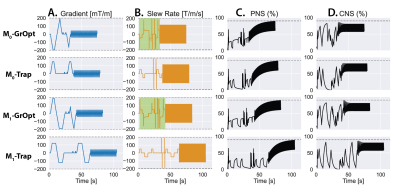 |
4800. Open-Source,
PNS-Constrained, and Optimized Gradient Waveform Design for
Brain Diffusion Tensor Imaging
A. Hannum, M. Loecher, Q. Chen, E. Arbes, S. Littin, K.
Setsompop, M. Zaitsev, D. Ennis
Stanford University, Stanford, United States
Impact: Integrating GrOpt into Pulseq enables efficient,
SNR-enhanced diffusion encoding on ultra-high-performance
MRI systems while managing peripheral nerve stimulation
(PNS). This open-source solution makes advanced pulse
sequence design accessible, thereby enabling DTI protocol
consistency and utility across research settings.
|
|
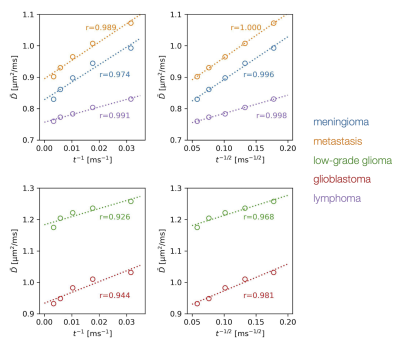 |
4801. Does
the packed impermeable sphere model explain time-dependent
diffusion of brain tumors measured with clinical scanners?
K. Kamiya, M. Mikai, Y. Fuchinoue, C. Nakada, K. Murata, T.
Feiweier, M. Hori, N. Sugo
Toho University, Tokyo, Japan
Impact: The tissue features dominating diffusion time
dependence of tumors may vary depending on histology and may
possibly deviate from the packed impermeable sphere model.
|
|
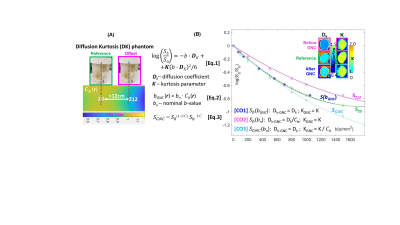 |
4802. Status
of on-scanner gradient nonlinearity bias correction for
extension to diffusion kurtosis imaging in multi-vendor setting
T. Chenevert, R. Paudyal, A. Lema-Dopico, L. Marinelli, N.
Abad, L. Wilmes, L. Wen, O. Darwish, D. Biswas, R. Jafari,
J. Peters, N. Hylton, S. Partridge, A. Shukla-Dave, D.
Malyarenko
University of Michigan, Ann Arbor, United States
Impact: Feasibility of diffusion kurtosis parameter
correction for gradient nonlinearity bias using
vendor-provided on-scanner outputs is tested across three MR
vendor systems in a quantitative non-Gaussian diffusion
phantom. Correction integration with other DWI enhancements
is found necessary for the best performance.
|
|
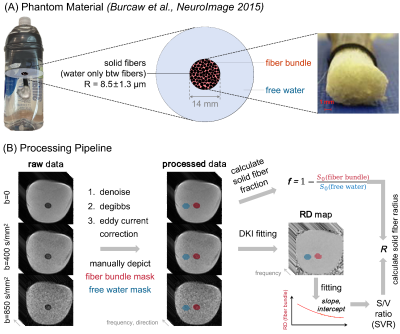 |
4803. Revealing
Diffusion Frequency-Dependence in Surface-to-Volume Ratio limit
using OGSE sequence on the Connectome 2.0 Scanner
J. Zheng, W. Zhong, D. Sung, J. Gerold, Q. Tian, H. Guo, S.
Huang, H-H Lee
Tsinghua University, Beijing, China
Impact: We performed diffusion frequency-dependence
using oscillating-gradient-spin-echo (OGSE) sequence
(≤100Hz) and accurately estimated fiber radius in an
anisotropic fiber phantom on the Connectome 2.0 human
scanner, demonstrating the potential of in vivo
microstructural imaging using OGSE.
|
|
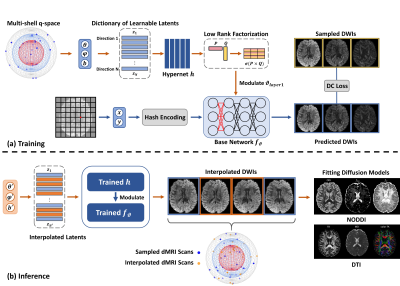 |
4804. Direction-Based
Latent Implicit Neural Representation for Diffusion MRI
Parameters Mapping
T. Zeng, Y. Zhang, H. Wei
Shanghai Jiao Tong University, Shanghai, China
Impact: This study enables efficient and adaptable
diffusion parameter mapping, potentially reducing scan times
and improving diagnostic workflows. The framework's
flexibility may inspire new research on dMRI applications
and help scientists explore a wider range of diffusion
models with limited data.
|
|
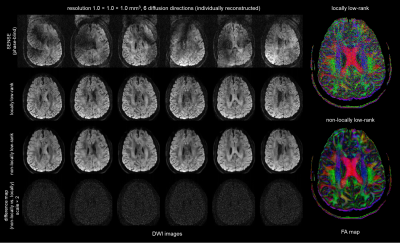 |
4805. Advancing
Multishot EPI Reconstruction for Diffusion MRI: From Locally to
Non-Locally Low-Rank Methods
Y. Dong, X. Ye, C. Li, M. J. van Osch, P. Börnert
C.J. Gorter MRI Center, Department of Radiology, LUMC, Leiden, Netherlands
Impact: This study presents a robust non-local-low-rank
reconstruction technique for multi-shot EPI in diffusion MRI
that achieves superior image quality and SNR. These advances
provide clearer anatomical details, supporting improved
diagnosis and encouraging the exploration of non-local
approaches in high-resolution imaging.
|
|
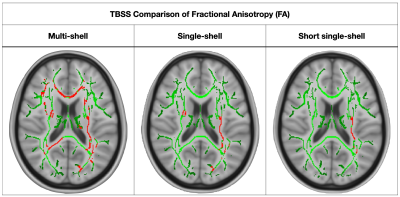 |
4806. Designing
a clinical diffusion MRI acquisition to measure white matter
damage in paediatric brain tumour patients
E. Drabek-Maunder, M. Cerbone, K. Mankad, K. Aquilina, J.
Dean, A. Nisbet, C. Clark
University College London, London, United Kingdom
Impact: This study demonstrates that shorter diffusion
MRI protocols can reliably detect white matter
abnormalities, facilitating the integration of diffusion MRI
into clinical workflows. This could support personalised
treatment planning in paediatric brain tumour care and
improve patient outcomes.
|
|
 |
4807. Zero-Shot
Self-Supervised Distortion-Free Diffusion MRI Reconstruction
M. Y. Avci, J. Cho, Y. Jun, B. Bilgic
King's College London, London, United Kingdom
Impact: ZS-PRIME combines advanced field map estimation
(PRIME) with zero-shot self-supervised training, achieving
distortion-free, high-resolution multi-shot diffusion MRI
from undersampled data. This obviates the dependency on
external training datasets, setting a new benchmark for
efficient, high-fidelity diffusion MRI.
|
|
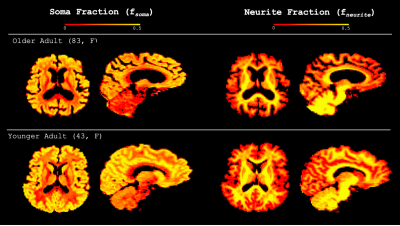 |
4808. Visualizing
Microstructural Changes in Aging and Cognitive Decline through
SANDI Analysis in Ultra-High Gradient Diffusion Imaging
A. Bhatt, H. Lee, K-S Chan, Y. Ma, J. Ford, H-H Lee, S. Y.
Huang
Athinoula A. Martinos Center for Biomedical Imaging, Massachusetts General Hospital, Charlestown, United States
Impact: This study employs ultra-high gradient diffusion
MRI to probe changes in neurite density and soma fraction
from aging and cognitive impairment. This approach can
elucidate early damage at the microstructural level from
aging and neurodegenerative diseases.
|
|
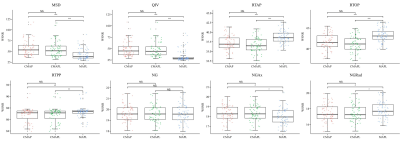 |
4809. Evaluating
the Image Quality and Brain Microstructural Exploration of Mean
Apparent Propagator-MRI—a Pilot Study
Y. Ling, J. Lv, M. Zhou, M. Su, Y. Wang, W. Chen, K. Wu, X.
Zhang, Q. Shi, X. Wan, Z. Liu
Chinese University of Hong Kong (Shenzhen) School of Science and Engineering, Shenzhen, China
Impact: This study highlights the strengths and
weaknesses of the MAPL, CMAP, and CMAPL algorithms in image
quality and ability to reflect brain microstructural
changes, offering valuable insights for future research on
brain pathology and physiological changes using DWI
technology
|
|
 |
4810. Low-frequency
asymptotic behaviour of the apparent diffusion coefficient when
measured with approximate cosinusoidal gradient waveforms
J. Kershaw, T. Obata
National Institute of Radiological Sciences, QST, Chiba, Japan
Impact: The microstructure of a complex medium can be
characterised by measuring the low-frequency limit of the
ADC with OGSE-DWI. However, it is important to understand
how the limitations of the gradient hardware affect
interpretation of the data.
|
|
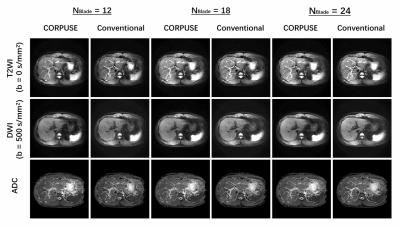 |
4811. The
Influences of Reconstruction Methods and Number of Blades on ADC
Repeatability in Free-breathing Liver DW-PROPELLER-EPI
Q. Wu, L. Liang, H. Xiong, L. Wang, Y-J Liu, C-H Liu, C-J
Juan, H. Chung, H-C Chang
The Chinese University of Hong Kong, Shatin, Hong Kong
Impact: Increasing the number of blades can more
significantly improve the ADC repeatability than increasing
the SNR, and therefore providing an insight into optimizing
the performance of free-breathing liver DW-PROPELLER-EPI.
|
|
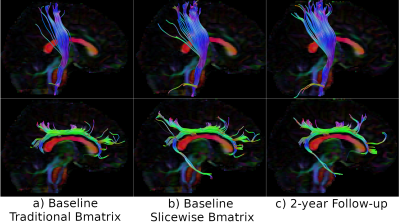 |
4812. Effect
of Slice-wise Bmatrix Rotation due to Intra-Volume Motion on
dMRI-derived Directional Information
M. O. Irfanoglu, C. Pierpaoli
NIBIB/NIH, Bethesda, United States
Impact: This study determined that tractography studies
performed on a population susceptible to large motion would
benefit from using slicewise-rotated Bmatrices for a more
accurate analysis.
|
|
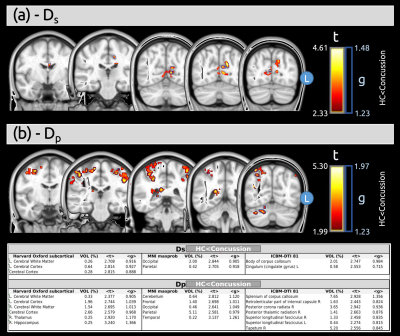 |
4813. Tri-Exponential
IVIM Model Identifies Microstructural and Perfusion Changes in
Concussion Compared to HC
M. Bergamino, L. Ott, M. McElvogue, R. Jha, C. Moreno, B.
Gutierrez, A. Stokes
Barrow Neurological Institute, Phoenix, United States
Impact: The tri-exponential IVIM model provides a view
of concussion-related changes by distinguishing between
different types of diffusion. This approach enables more
precise detection of tissue damage and vascular alterations,
especially in vulnerable regions like the corpus callosum,
thalamus, and hippocampus.
|
|
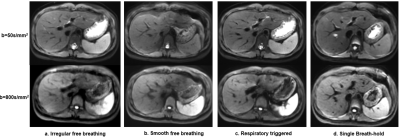 |
4814. Deep
Learning Accelerated Single Breath-hold abdominal DWI with full
liver and kidney coverage
C. Fu, L. Yang, M. D. Nickel, R. Grimm, D. Weng
MR Application Development, Siemens Shenzhen Magnetic Resonance Ltd., Shenzhen, China
Impact: Single breath-hold DWI can shorten scanning
time, reduce artifacts and improve ADC estimation,
potentially improving diagnostic reliability in abdominal
MRI.
|
|
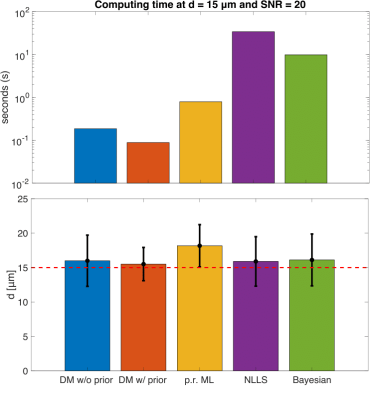 |
4815. Improving
data fitting accuracy and precision for MRI cytometry
D. Chanthavisay, X. Jiang, J. Gore, J. Xu
Institute of Imaging Science (VUIIS), Vanderbilt University Medical Center, Nashville, United States
Impact: To improve and achieve robust data fitting
accuracy and precision for clinical applications.
|
|
 |
4816. Impaired
glymphatic system function in pre-cirrhotic NAFLD patients:
Evidenced from DTI-ALPS
K. Shu, L. Han, P. Wu, Z. Yan, K. Liu
The Second Affiliated Hospital and Yuying Children’s Hospital of Wenzhou Medical University, Wenzhou, China
Impact: The results demonstrate the feasibility of
DTI-ALPS, which can be used for research on glymphatic
system function in NAFLD. These findings contribute to
understanding the link between the GS and NAFLD, along with
its connection to cognition and clinical indicators.
|
|
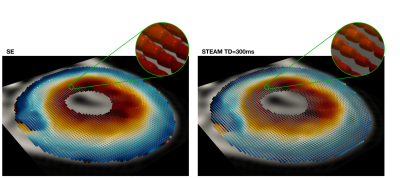 |
4817. Effects
of varying diffusion mixing time in ex-vivo cardiac DTI: a
comparison of spin echo and stimulated echo sequences
C. Munoz, A. Di Biase, K. Kunze, K. McCarthy, D. Pennell, P.
Ferreira, A. Scott, S. Nielles-Vallespin
Imperial College London, London, United Kingdom
Impact: High SNR spin-echo based ex-vivo cardiac MR
diffusion can provide an accurate characterization of
cardiac microstructure and enable high resolution depiction
of sheetlet organization in the heart.
|
|
| 4818. WITHDRAWN | ||
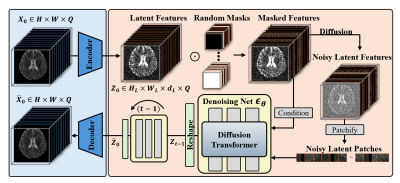 |
4819. Autoregressive
Masked Diffusion Transformer for Consistent Zero-shot Angular
Space Super-Resolution in Diffusion MRI
M. Nan, W. Fan, J. Zou, R. Wu, S. Wang
Shenzhen Institute of Advanced Technology, Chinese Academy of Sciences , Shenzhen, China
Impact: MDiT’s ability to accurately reconstruct
diffusion data under various sampling schemes without
retraining could advance clinical dMRI applications,
supporting efficient, high-quality dMRI imaging even under
practical clinical constraints.
|
The International Society for Magnetic Resonance in Medicine is accredited by the Accreditation Council for Continuing Medical Education to provide continuing medical education for physicians.